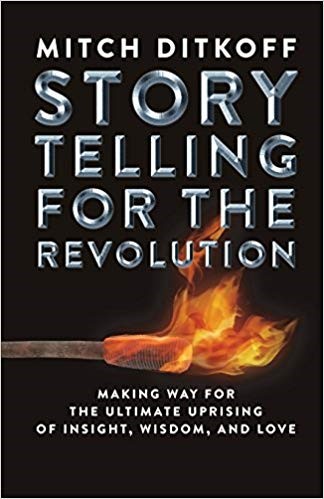50 Ways to Foster a Sustainable Culture of Innovation

I hear a lot of talk these days about how important it is for organizations to establish a culture of innovation.
Yup. True. So what else is new?
The key is closing the gap between theory and practice. Words are cheap. It's easy to wax poetic about "culture change." It's quite another thing to make it happen.
Still, the effort is worth it.
And so, to help you on your way, here's Idea Champions' list of 50 things you can do to foster a culture of innovation.
50 WAYS TO FOSTER A SUSTAINABLE CULTURE OF INNOVATION
1. Remember that innovation requires no fixed rules or templates -- only guiding principles. Creating a more innovative culture is an organic and creative act.
2. Wherever you can, whenever you can, always drive fear out of the workplace. Fear is "Public Enemy #1" of an innovative culture.
3. Have more fun. If you're not having fun (or at least enjoying the process) something is off.
4. Always question authority, especially the authority of your own longstanding beliefs.
5. Make new mistakes.
6. As far as the future is concerned, don't speculate on what might happen, but imagine what you can make happen.
7. Increase the visual stimuli of your organization's physical space. Replace gray and white walls with color. Add inspiring photos and art, especially visuals that inspire people to think differently. Reconfigure space whenever possible.
8. Help people broaden their perspective by creating diverse teams and rotating employees into new projects -- especially ones they are fascinated by.
9. Ask questions about everything. After asking questions, ask different questions. After asking different questions, ask them in a different way.
10. Ensure a high level of personal freedom and trust. Provide more time for people to pursue new ideas and innovations.
11. Encourage everyone to communicate. Provide user-friendly systems to make this happen.
12. Instead of seeing creativity training as a way to pour knowledge into people's heads, see it as a way to grind new glasses for people so they can see the world in a different way.
13. Learn to tolerate ambiguity and cope with soft data. It is impossible to get all the facts about anything. "Not everything that counts can be counted. Not everything that can be counted counts," said Einstein.
14. Embrace and celebrate failure. 50 to 70 per cent of all new product innovations fail at even the most successful companies. The main difference between companies who succeed at innovation and those who don't isn't their rate of success -- it's the fact that successful companies have a LOT of ideas, pilots, and product innovations in the pipeline.
15. Notice innovation efforts. Nurture them wherever they crop up. Reward them.
16. When you're promoting innovation in-house, always promote the benefits of a new idea or project, not the features.
17. Don't focus so much on taking risks, per se, but on taking the risks OUT of big and bold ideas.
18. Encourage people to get out of their offices and silos. Encourage people to meet informally, one-on-one, and in small groups.
19. Think long term. Since the average successful "spin-off" takes about 7.5 years, the commitment to innovation initiatives need to be well beyond "next quarter."
20. Create a portfolio of opportunities: short-term, long-term, incremental, and discontinuous. Just like an investment portfolio, balance is critical.
21. Involve as many people as you can in the development of your innovation initiative so you get upfront buy-in. This is the "go-slow now to go-fast later" approach. (The opposite approach of having a few people go off to a desert island and come back with their concept is almost always doomed to failure).
22. Improve the way brainstorming sessions and meetings are facilitated in your organization. Create higher standards and practices.
23. Make sure people are working on the right issues. Identify specific business challenges to focus on. Be able to frame these issues as questions that start with the words, "How can we?"
24. Communicate, communicate, communicate, communicate, communicate and then communicate again. Deliver each important message at least six times.
25. Select and install idea management software for your intranet. (Or, if you've got an intranet and certain directories available to everyone, set up your own idea depository/database and make it as interactive as you want).
26. Don't focus on growth. Growth is a product of successful innovation. Focus on the process of becoming adept at taking ideas from the generation stage to the marketplace.
27. Make customers your innovation partners, while realizing that customers are often limited to incremental innovations, not breakthrough ones.
28. Understand that the best innovations are initiated by individuals acting on their own at the periphery of your organization. Don't make your innovation processes so rigid that they get in the way of informal and spontaneous innovation efforts. Build flexibility into your design. Think "self-organizing" innovation, not "command and control" innovation.
29. Find new ways to capture learnings throughout your organization and new ways to share these learnings with everyone. Use real-life stories to transfer the learnings.
30. Stimulate interaction between segments of the company that traditionally don't connect or collaborate with each other.
31. Develop a process of trying out new concepts quickly and on the cheap. Learn quickly what's working and what's not.
32. Avoid analysis paralysis. Chaotic action is preferable to orderly inaction.
33. Before reaching closure on any course of action, seek alternatives. Make it a discipline to seek the idea after the "best" idea emerges.
34. Know that attacking costs as a root problem solves nothing. Unreasonable costs are almost always a sign of more profound problems (e.g. inefficient structures, processes or training).
35. A great source of new ideas are people that are new to the company. Get new hires together and tap their brainpower and imagination.
36. Get customer feedback before committing resources to a product's development.
37. Seek diversity of viewpoints. Get people together across functions. A diversity of views sparks more than conflict -- it sparks innovation.
38. Invite outside partners early on when exploring new opportunities. Find ways for your company to partner with others and actively share ideas, technologies, and other capabilities.
39. Avoid extreme time pressures.
40. Don't make the center of your efforts to help people be more creative a physical "creativity center." Fold your innovation resources into your business units.
41. Don't make innovation the responsibility of a few. Make innovation the responsibility of each and every employee with performance goals for each and every functional area.
42. Give your people specific, compelling, and measurable innovation goals.
43. Try to get as much buy-in and support from senior leadership as you can while realizing that true change NEVER starts at the top. How often does the revolution start with the King?
44. Realize that "resource allocation" is the last bastion of Soviet-style central planning. Think of new innovation opportunities as "resource attractors."
45. Pay particular attention to alignment. Ensure that the interests and actions of all employees are directed toward key company goals, so that any employee will recognize and respond positively to a potentially useful idea.
46. Reward collective, not only individual successes, but also maintain clear individual accountabilities and keep innovation heroes visible.
47. Do your best to ensure that linear processes give way to networks of collaboration.
48. Remove whatever organizational obstacles are in the way of people communicating bold, new ideas to top management.
49. Systematize. Find problems (not only with products, but with processes, customer service, and business models) and solve them.
50. Drive authority downwards. Make decisions quickly at the lowest level possible.
NOTE: This list co-authored with Val Vadeboncoeur
Thanks to Michael Plishka, of ZenStorming, for his refinement of #25.
Posted by Mitch Ditkoff at February 10, 2009 06:31 PM
Comments
A great list Mitch. Concise, practical advice.
Posted by: Paul Sloane ![[TypeKey Profile Page]](http://www.ideachampions.com/weblogs/nav-commenters.gif) at February 10, 2009 11:16 AM
at February 10, 2009 11:16 AM
Great list!
I would also add:
Don't make a project upon which your business depends be a Flagship Project for innovation at your company.
Posted by: plish ![[TypeKey Profile Page]](http://www.ideachampions.com/weblogs/nav-commenters.gif) at February 10, 2009 08:58 PM
at February 10, 2009 08:58 PM
Very informative! While some of the suggestions won't work for all companies all of the time, they are all relevant in the right context. They are very similar to what we have been working on - an Innovation Capability Assessment (ICA: see www.indutech.co.za/ica) that evaluates the maturity of a company along 42 innovation capability parameters. We choose to stay away from the word culture because - as you said - it has been seriously abused! Thanks for the post..
Posted by: Heinz Essmann ![[TypeKey Profile Page]](http://www.ideachampions.com/weblogs/nav-commenters.gif) at February 12, 2009 08:15 AM
at February 12, 2009 08:15 AM
Val and Mitch-
This is a great list!
I like that it's both comprehensive and internally consistent... none of these behaviors contracts others in the list (whew- that could really stifle innovation).
Probably the hardest link to create between the vision and the reality are the specific systems that lock intention into routine behavior. While some of these suggestions (like #3 re:fun) can't really be designed in, they will be outcomes of other tactics that you can design into a system.
Also, it would be fun to just try one of these a week...
thanks again-
cvh
Posted by: CV Harquail ![[TypeKey Profile Page]](http://www.ideachampions.com/weblogs/nav-commenters.gif) at February 27, 2009 10:44 AM
at February 27, 2009 10:44 AM
Thanks for the list. I agree with most of them - but one in particular do not agree: 39. Avoid extreme time pressures.
There are times and certain personality types that function best under pressure. Deadlines can provide part of the goal, keeping deep thinkers from thinking too much. In know that when working with school kids on innovation projects for example, a popular technique is sometimes to say "Ok forget it there is no answer I guess, lets move on." Suddenly there is a rush for consensus and a very innovative response is provided. - Just one example, others exist with adults in industry as well.
I am not saying that you should always impose extreme time pressures, but you should recognize that sometimes its just what the team needs to get the innovation juices pumping.
Posted by: Carl Frappaolo ![[TypeKey Profile Page]](http://www.ideachampions.com/weblogs/nav-commenters.gif) at February 27, 2009 12:08 PM
at February 27, 2009 12:08 PM
Post a comment
Thanks for signing in, . Now you can comment. (sign out)
(If you haven't left a comment here before, you may need to be approved by the site owner before your comment will appear. Until then, it won't appear on the entry. Thanks for waiting.)













